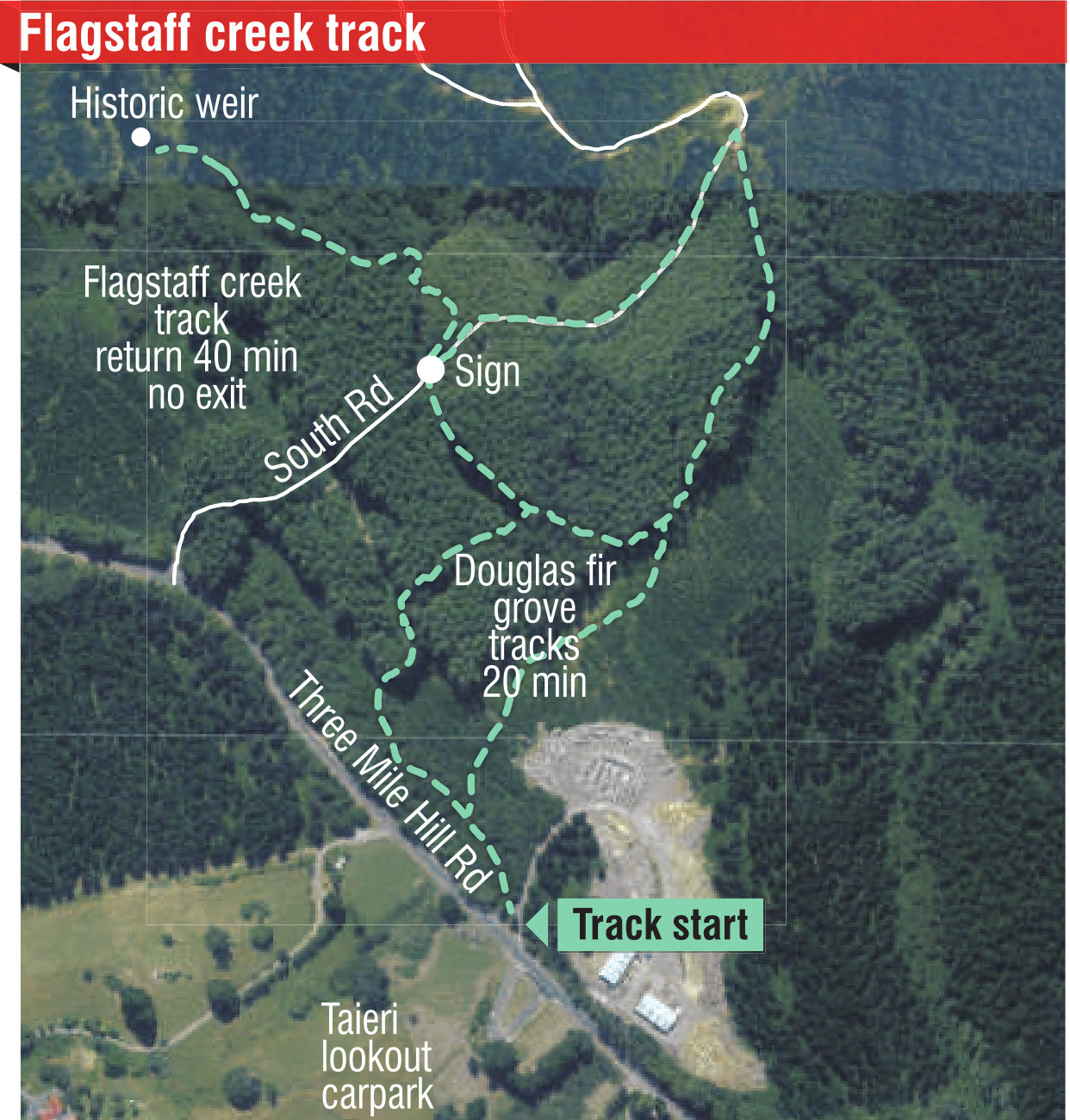
It’s a forest you can almost miss for the trees, writes Clare Fraser.
Driving down Three Mile Hill most of us register the Taieri Plains Lookout. Directly opposite, hidden in plain sight is an hour’s walk through exotic forest, Flagstaff Creek.
Just inside the forest, close enough to the road to hear traffic you might hear the shriek of the near-threatened native falcon, karearea. Pretty impressive. There’s lots of other native and introduced birdsong too.

But to the initial eye the forest seems like a slightly strange collection of random species with native regrowth and the odd plant label. What’s going on here?
In the words of City Forests, it’s a "recreational museum". It was planted around World War 1, bequeathing us an insight into local forestry’s early days.

Minus today’s heavy machinery, they had to prepare the land manually. Without aerial weed control, this was done by hand. Propagation was local. As a result, forest was planted in what we now consider small patches, compared with today’s large enterprises.

Flagstaff Creek stands as a time capsule, maintained by City Forests for people’s pleasure.
From the road you can go straight downhill. Alternatively, to impress yourself, veer right through the Douglas Fir Grove. These skyscrapers rival douglas fir grown anywhere else in the country, for size as well as productivity.
To avoid windfall avoid the tracks to the right of the map. Or proceed with care for an arresting, slug’s eye view of exposed roots that recently anchored massive trees now lying flat.
All routes lead to the gully below, with its creek and one-way walk to a weir. You’ll also hit a gravel road from where you can find a few more bush tracks.


Road names reflect those back in the big smoke. "High Street" is particularly good for a steep uphill blow-out. It’s about 45 minutes’ uphill walking to an intersection with some enticing hilltop roads. There’s a real sense of height up there, with unencumbered breezes and a rare glimpse over the hilltops of the Silverpeaks.
Horses, mountain bikers, trail bikers and runners all use the tracks too. What a treat to have access to this, so close to the city.












